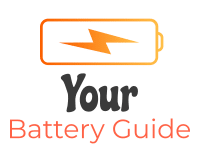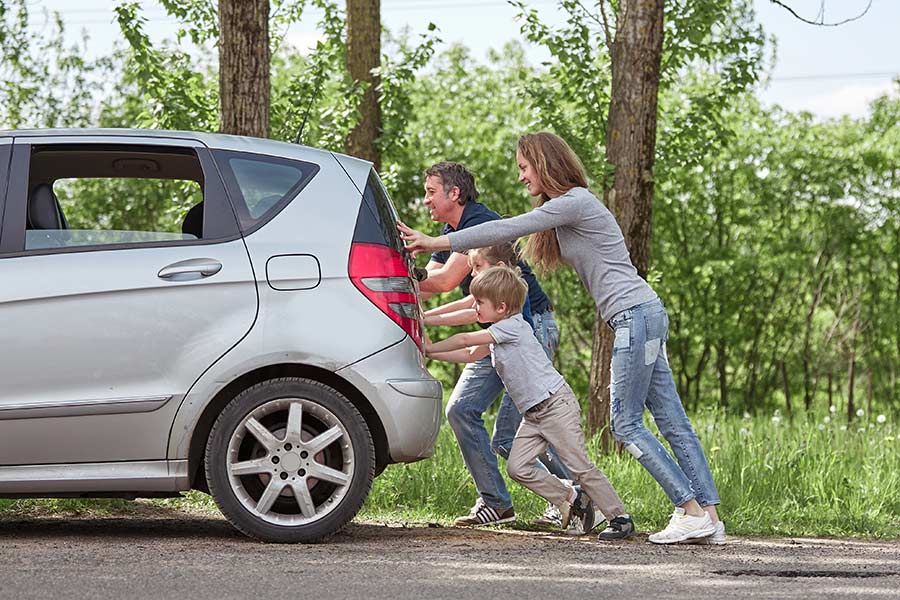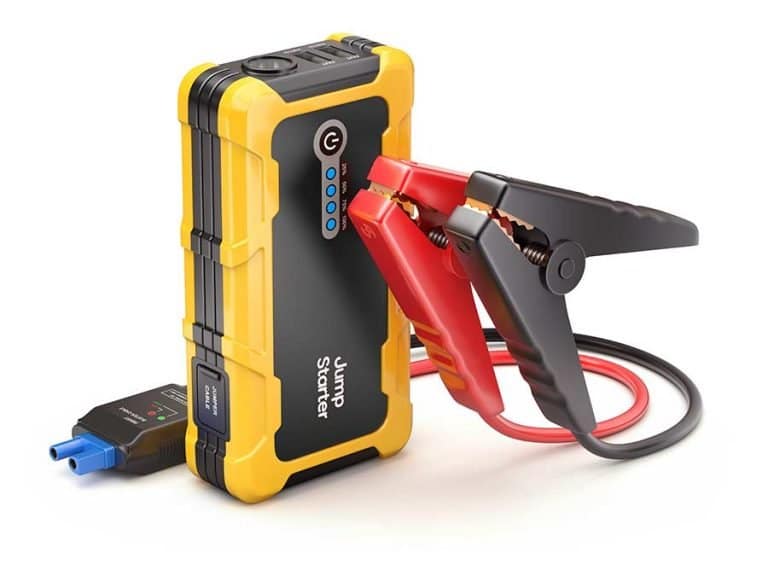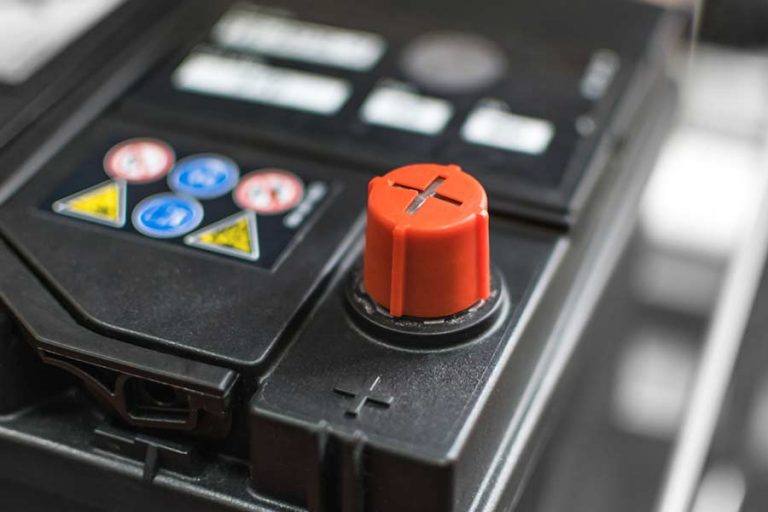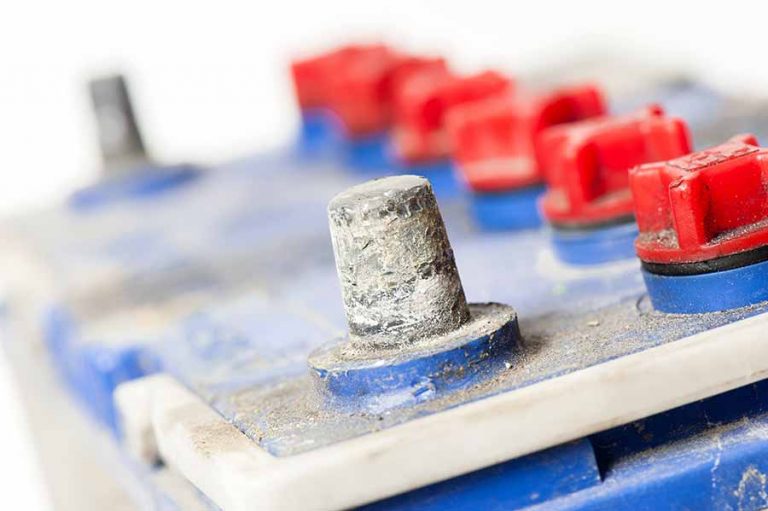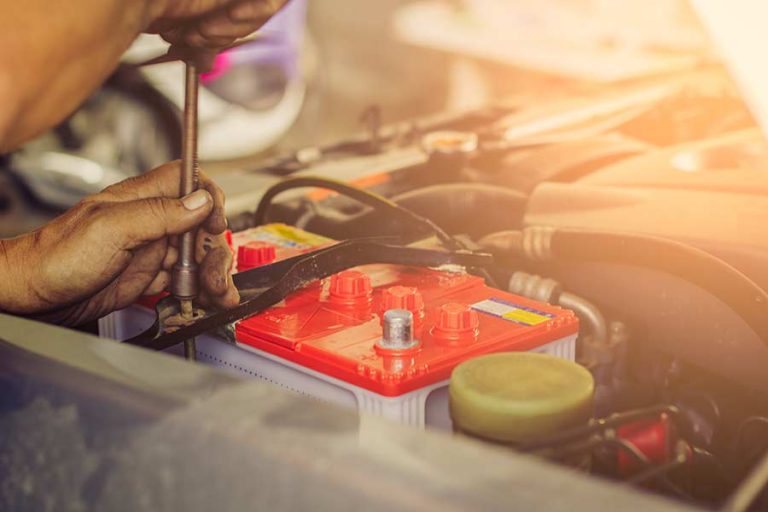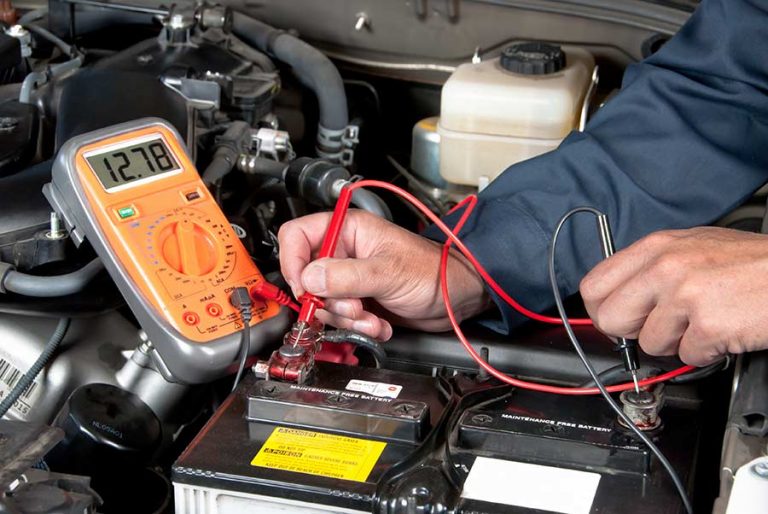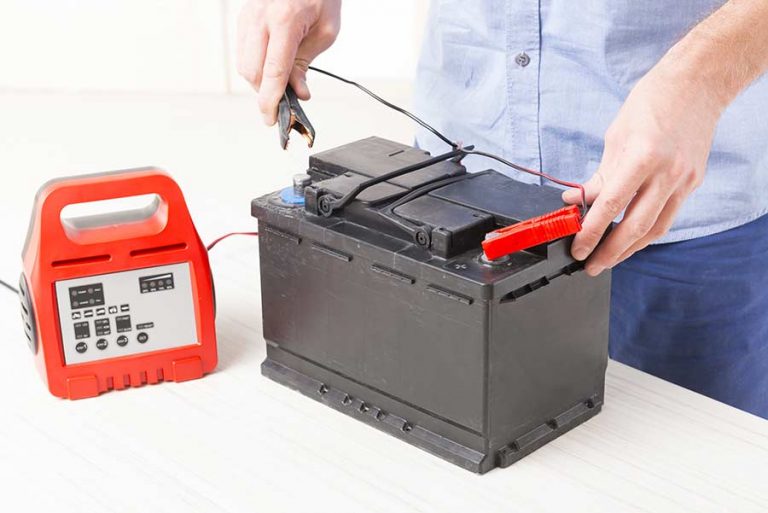How To Jump Start A Car Manually
Whether you have left your headlights on or have been sitting listening to the radio in your car, often when you discover that you have a flat car battery, you will not have a set of Jump Cables or a Portable Jump Starter.
The basic method to manually jump start your car is :
- Have someone to help push your car.
- Put your car into neutral and turn the ignition key to the on position.
- Make sure it is safe to pull away.
- Have your helper push the car to gather speed.
- Once you have picked up some speed, use your clutch and shift the car into 2nd or 3rd gear.
- Quickly release the clutch which should cause a sharp jolt as your engine cranks.
- Repeat the above steps until your car starts.
- Once the engine is running, allow it to idle for 5 minutes, reving it intermitently whilst the battery charges and then drive it home or to a garage immediately.
The rest of this guide will explain in more depth, how to jump start a car manually.
The Best Way To Manually Jump A Car
Learning how to jump a car is essential for anyone that suffers frequently from car battery problems or if you just spend a lot of time on the road.
The manual jump start technique is very easy to learn and you will undoubtedly use it, time and time again throughout your lifetime. Even new cars get flat batteries.
Learning the best way to manually jump start a car is easy, but it does require the most effort and sometimes needs assistance from others.
In my opinion, the best way to manually jump start a car is to not have to. Instead I would suggest that you keep a portable jump start or portable power pack in the car as they require no effort and can be incredibly useful for many applications such as flat tyres and the charging of phones and tablets.
A set of jumper cables are a cheaper alternative and will also require a donor car to jump start from.
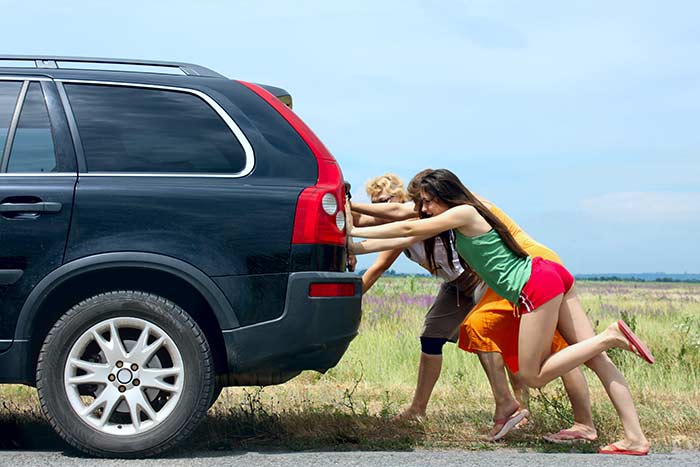
Below is a list of the Pro’s and Con’s of using the manual jump start method:
PRO’s
- The maual jump start is simple to perform.
- No extra equipment is required such as jumper cables or portable jump packs.
- Manually jump starting a car is usually a quick process.
- On some occasions you can perform a manual jumpstart by yourself.
CON’s
- The manual jumpstart will often require assistance from others unless you have broken down on a hill.
- To manually jump a car requires physical effort unless you have broken down on a hill.
- It can be difficult to jump start a very flat car battery using this method, and it is not always successful.
- Some vehicle maufacturers advise against manually jump starting as it may cause damage to the vehicle. (Always check the manufacturers guidance)
If you are a regular driver, it is always advisable to be prepared for all eventualities. I will usually keep a selection of items in my car at all times such as a bottle of water, tool box, spare fuses, first aid box and a portable power pack.
All of the above items will help you out in most situations and most of the items are very cheap to buy. The portable power pack is the most expensive but it can also be the most useful piece of equipment.
If you have a dead car battery, and if after reading the above and you have no option other than to manually jump start your car, you will find a step by step guide below for jump starting both manual and automatic cars.
How To Jump Start A Manual Car
Although we have covered the steps below at the beginning of this post, we have made the steps a little more detailed.
The below steps should have your car running again in no time.
- Have your car on a level surface or pointing downhill.
- Have one or more assistants ready to push your car. If you are pointing downhill, you can perform the jump start safely by yourself.
- Put your foot on the brake pedal, remove the handbrake, and put your car into neutral.
- Turn your ignition key to ON.
- Release the footbrake as your helpers begin to push your car, or if pointing downhill, wait for your car to gather speed.
- Once your car is coasting at approximately 5-10mph (roughly 10-15 kph), you will need to depress the clutch and move your car into second or third gear.
- Indicate to your helpers that you are ready to release the clutch.
- Release the clutch quickly, and when ready. As you hear the engine fire, gradually depress your accelerator pedal.
You should hear your engine turn over as the clutch is released, and this should provide enough power to start your car.
You may need to repeat the steps above several times before your car starts sucessfully.
How To Jump Start An Automatic Car
Automatic transmissions can vary in design quite a bit, so it will not always be possible to jump start a car with an automatic transmission. You can try and follow the steps below.
- Make sure that your car is on a level surface or a downhill slope.
- If on a level surface, you will need assistance to push your car.
- Insert the ignition key and turn to the on position.
- Turn off light, radio, windscreen wipers, or anything else that will drain from the battery.
- Place your transmission into NEUTRAL if you have it or place it into DRIVE.
- Disengage the handbrake and either signal to your assistants to start pushing or if on a hill, let your car gather some speed.
- If your transmission is in NEUTRAL, put it into DRIVE, and when you have enough speed, 5-10mph (roughly 10-15kph) try to start your car by turning the ignition key.
If you are unsuccessful in using the automatic jump start method, you will need to use jump leads or a portable jump pack. Read our How To Jump Start A Car With Jumper Cables guide or our How To Jump Start A Car With A Portable Power Pack guide.
If you have a very flat battery, you may need to perform the steps above several times. To avoid your car from stalling, you will need to rev the engine. Stalling your car at this point will require you to repeat the steps above.
Now that you have managed to start your car, it would be advisable to take it for a drive to replenish some charge into the battery.
How Long To Run A Car After Jump Start
So you have managed to start your car, great news! But some further questions that you will need answering are:
- How long to run a car after jump start?
- How long does it take to charge a car battery while driving?
- Can you charge a car battery while idling?
Manually jump starting your car will provide the battery with just enough energy to get the engine running, but you now need to build up some charge in the battery so that your car will start when you next need it to.
The alternator in your car is a device that spins while the engine is running. As it spins, it creates an electrical current that will feed your battery and essentially charges the battery as you drive.
The current that is output through your alternator is not very strong, so it is not the most suitable method for recharging a flat car battery. Dependent upon the battery size and alternator output, it could take around 5 hours or more of running your car for the battery to reach anywhere near full charge.
Driving your car or just idling your car doesn’t really make any difference when charging your car’s battery. If you are idling your vehicle, you will ideally need to keep the revs to at least 2000rpm, which will have the alternator functioning at full power. It is also important to note that your alternator will sense when your battery charge is low and will continue to operate at full power until it becomes fully charged.
Using the alternator to charge a battery from flat will put an excessive strain upon it, shortening its lifespan as alternators are designed only to top up your car battery charge each time you drive your car.
If you are going to charge your battery over time through regular driving, running it initially for around 10 minutes should provide enough charge so that your car will start the next time you need it.
Can You Jumpstart A Car With A Bad Alternator?
Sometimes your car battery may run flat due to a faulty alternator and you may ask, can you jumpstart a car with a bad alternator? The alternator is part of the cars electrical system which operates whilst the car engine is running.
As the alternator spins, it generates a small electrical current which helps to provide electricity to the cars electrical system, (fans, lights, radio, fuel pump etc) and will also divert some of this current to the car battery to keep it topped up.
The alternator does not provide a huge amount of electricity and there will be times when your car is using so much electricity that the battery has to take over and provide the excess power.
It is quite easy to identify the alternator in your car. A basic alternator is pictured below.
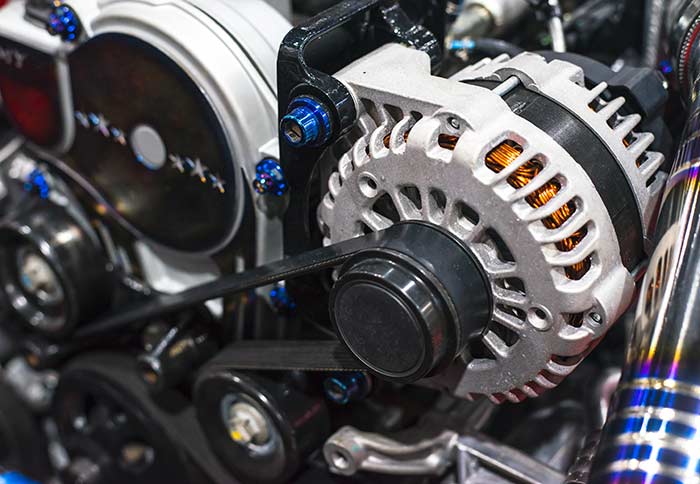
Alternators can burn out over time and will therefore not provide any energy to the battery which will eventually run flat. So can you jumpstart a car with a bad alternator?
The short answer is yes. If your car battery has run flat from a bad alternator, it may not have enough energy to crank the starter motor, however, it may have enough power to run the engine once you have jump started your car.
You can usually tell if your alternator is faulty as the battery light will be illuminated on your instrument display panel. If you do get your car started and your alternator is faulty, I would strongly advise you get your car to the nearest garage or take it home as soon as possible.
Even though you have managed to jump your car, your battery will not be getting charged as it usually would.
The alternator may no longer be supplying energy to the cars electrical system which will now be relying solely on the battery. In these circumstances your battery which is already quite flat, will quickly run completely flat and will not be able to keep the cars engine running.
Can You Jump Start A Car With A Bad Starter Motor?
If you are unable to start your car, it may be that you have a faulty starter motor. You may want to know can you jump start a car with a bad starter?
A flat battery, faulty alternator or a faulty starter motor can stop you from starting your car. There are other reasons that your car may not start, but these are some of the main reasons.
I have covered a faulty alternator above, but can you jump start a car with a bad starter motor?
The simple answer to this question is yes, provided you are using the manual jumpstart (push start method). People often refer to jump starting a car when they are refering to the use of jumper cables or a battery power pack. If you have a faulty starter motor, you can only jump start using the push method.
A basic starter motor is pictured below.
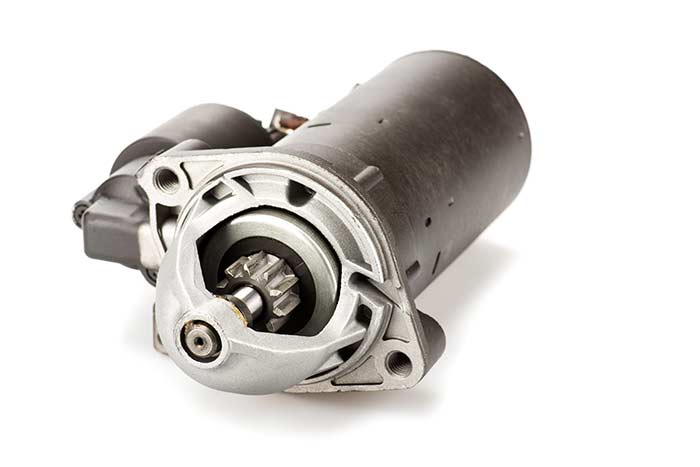
A starter motor requires quite a large amount of energy to crank a cars engine. Often times when you have a flat battery, you will hear a clicking noise when you try to start your car.
The clicking sound that comes from the starter motor is the magnetically controlled contacts that are opening and closing continually. Often times a dead battery will provide enough energy for the starter motor to open and close these contacts, but not enough energy to crank the engine. Using a set of jumper cables or portable power pack will help provide the energy necessary for a starter motor to function correctly.
If a starter motor is faulty or jammed, no amount of energy will get it to work, but push starting your car avoids the need for the starter motor altogether and can be a quick fix. Your starter motor problems will not get better by themselves so you will need to get it fixed or replaced as soon as possible to avoid further jump starts.
Conclusion
Now that you have a good understanding of the manual jump start method, I should advise you to charge your car battery with a battery charger at your earliest opportunity.
As I mentioned above, leaving your car battery in an uncharged state will continually put an extra strain upon the alternator and eventually lead to it failing.
Why not read our How To Change A Car Battery guide and our How To Charge A Car Battery At Home guide.
